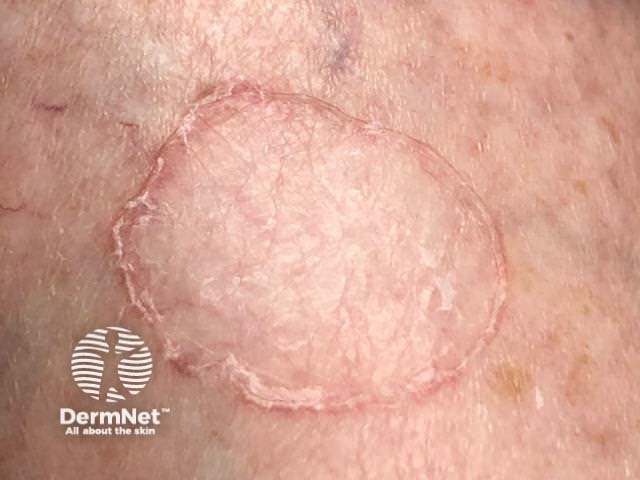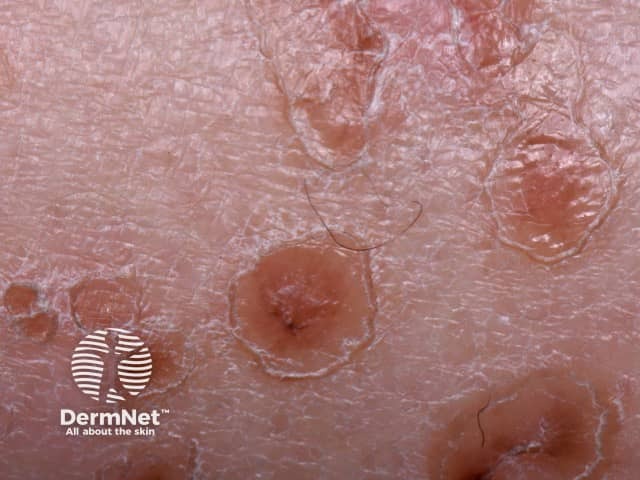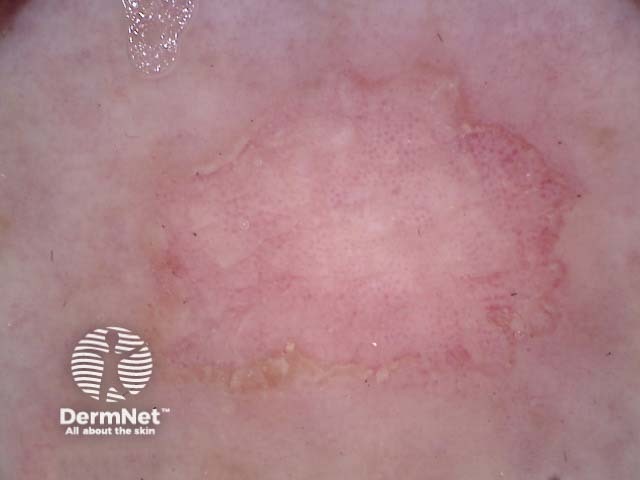Main menu
Common skin conditions

NEWS
Join DermNet PRO
Read more
Quick links
Introduction
Types
Demographics
Causes
Clinical features
Complications
Diagnosis
Treatment
Porokeratosis is a group of skin conditions in which there is abnormal keratinisation. The skin lesions that result are dry and atrophic, with a well-defined ridge-like hyperkeratotic border called a cornoid lamella (best seen on dermoscopy) [1].

Porokeratosis of Mibelli

DSAP

Dermoscopy view
Types of porokeratosis include:
Porokeratosis can be present at birth or not develop until adult life [2], depending on the type of porokeratosis.
The cornoid lamella in porokeratosis is due to an expanding clonal proliferation of unusual keratinocytes, which is thought to be due genetic mutation [4].
In some types of porokeratosis, a family history is present, consistent with a genetic predisposition [3].
Each porokeratosis lesion has a characteristic ridge on its border and a central furrow. Their size, onset and distribution depends on the specific type of porokeratosis.
The main complication of porokeratosis is a skin cancer, which can develop within a porokeratosis lesion. This may be either a basal cell carcinoma or squamous cell carcinoma, and is more likely to occur in older adults [6]. Porokeratosis should be monitored for malignancy.
The diagnosis of porokeratosis is usually made clinically, often with the help of dermoscopy, but sometimes a biopsy is needed. The biopsy should include the raised edge of the lesion. The pathology of porokeratosis is very distinct, but it may be necessary to point out the clinical features for the pathologist to find a cornoid lamella within the pathological specimen.
There is no known cure for porokeratosis and treatment is generally disappointing. However, the appearance may improve with the following measures:
Sun protection is important as exposure to ultraviolet radiation may result in the development of a skin cancer within the linear porokeratosis.